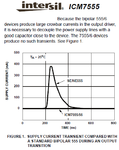boylesg
Advanced Member level 4
- Joined
- Jul 15, 2012
- Messages
- 1,023
- Helped
- 5
- Reputation
- 10
- Reaction score
- 6
- Trophy points
- 1,318
- Location
- Epping, Victoria, Australia
- Activity points
- 11,697
The probe I am using has a little switch X1 and X10. I am using it on x10.What is the frequency of oscillation?
What is the length of the wires on your breadboard?
Numbers always help discussions, since they rule possibilities out.
In which case I assume you are using a *1 probe, which will have ~150pF capacitance (i.e. "C")
What is the inductance associated with the wires (i.e. "L")? (Assume 1nH/mm)
What would you expect the resonant frequency of the LC circuit to be? (Use google if you don't know the formula)
- - - Updated - - -
If you don't want to see what is happening in your implementation, then add the filters.
But there are no other adjustments. Look it was clearly not a top of line probe.
I have used matrix board not PCB. I have created perhaps half the traces on the underside with stripped and tinned magnet wire. The other half are insulated hookup wires on top of the board. It is not exceptionally well optimized for trace length but I kept them to a minimum as much as was practical. So I can't expect to have a pristine square waves etc. But then again I probably can't expect to accurately detect every bit ringing and other signal distortions with a very old style valve based oscilloscope. But my circuit is not a low power precision one, so it probably does not matter.
I am getting to know Ultiboard and am toying with the idea of producing a PCB version of my circuit. Just to try the process out.
I wonder how practical it would be to transfer the printed circuit to a plain fibre glass board (no copper), paint the traces with araldite or something, coat the uncured araldite with Al powder and then plate the traces with copper from slightly acidic copper sulfate. It might be worth a try.
It would certainly be a more efficient use of copper given that copper ore is becoming scarce and copper more expensive.

